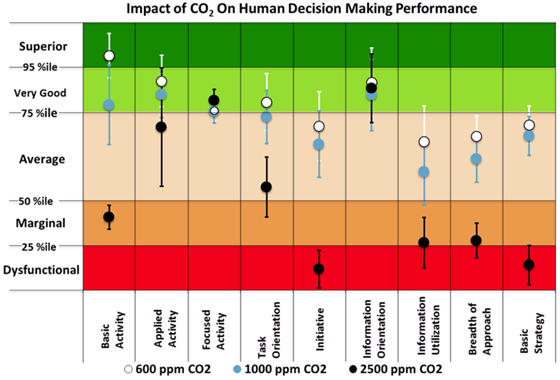Many people worry about rising atmospheric carbon dioxide (CO2) concentrations. They should. Elevated atmospheric concentrations of carbon dioxide, which are normal in office buildings, school rooms, hospital operating rooms, and the White House Oval Office impair cognitive performance. An increase in ambient carbon dioxide concentration can only further impair the mental capacity of the office-bound functionaries who run the world.
Furthermore, increased atmospheric carbon dioxide concentration raises plant productivity. That's great if you're a farmer, but not so great if you worry about population growth, which is mainly occurring in places where population is food limited -- resulting, naturally, in well intentioned efforts to increase food production even more, which tends to result in people still going hungry but in greater numbers.
Then there's climate change anxiety. Does anyone know for sure what a doubling of atmospheric carbon dioxide, which we are on course to achieve, will do to the climate and, as a result, to us. Well, there are lots of people to warn of the consequences, but the reality is that we don't know: we're just playing with fire.
What then to do. Easy, just suck it up -- the carbon dioxide, that is. How? Atmospheric carbon dioxide capture and sequestration is already being implemented on a substantial scale. But it costs. So a carbon tax applied in full to direct-air carbon dioxide capture (DAC) provides the solution.
Current estimates of cost are in the region of US$0.70 per kilogram of carbon dioxide. So just apply a tax of around $1.50 per litre to gasoline and the equivalent to other sources of carbon dioxide and invest the proceeds in massive DAC plants. That will make using a car more expensive -- on average about an additional US$0.30 per kilometer -- but IT'S NOT PROHIBITIVE. And as a plus, folks will drive less, though remaining free to drive as much as they want -- at a price.
Canada and 40 other national or sub-national jurisdictions already have a carbon price. What remains to be done is to apply the tax revenue to direct air carbon dioxide capture and sequestration.
As for those expensive, overweight electric cars that you can't fast-charge if you're out in the boonies, forget 'em.
Other carbon-emission-free options for the future include vehicles powered by an internal combustion engine burning either ammonia, yielding nitrogen and water vapor, or methanol synthesized by hydrogenation of carbon dioxide captured from the atmosphere.






